Autumn brings a sea of gold, burgundy, and purple mums to garden centers, but these seasonal blooms are short-lived, high maintenance, and offer little for pollinators.
Swap them for native plants and enjoy fall color that keeps coming back, supports wildlife, and turns your garden into a colorful, wildlife-friendly paradise!
Why Skip Mums?
- Short Lived: Most store-bought mums are bred for one season and rarely survive winter unless planted early.
- Water Hogs: They don’t like being dried out for too long and have higher water needs than most native plants.
- Little Love for Pollinators: They provide minimal nectar or pollen for bees and butterflies compared to native species.
- High Maintenance for Little Return: Once they’re past their prime, they often end up in the compost (or the trash).
Native Alternatives for Fall Color
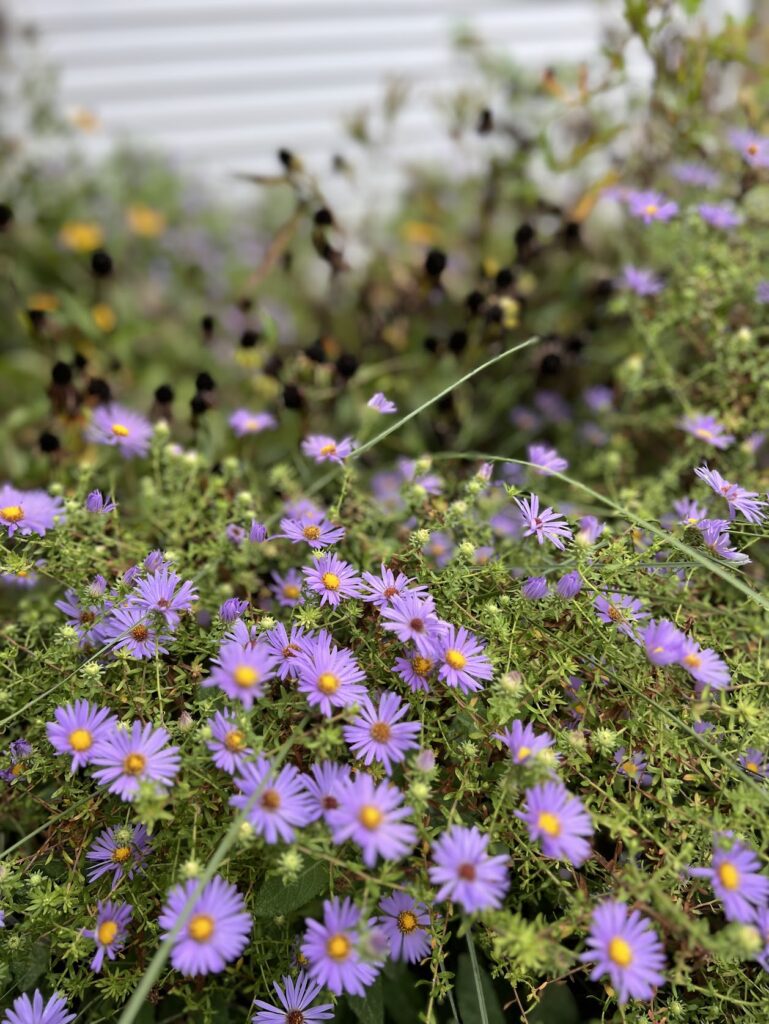
1. New England Aster (Symphyotrichum novae-angliae)
Aster blooms rival mums for vibrancy, but last longer and provide much-needed nectar for bees and migrating monarchs. Their seeds are a welcome snack for songbirds and small mammals too, so the benefits keep going even after the flowers fade. Tough and dependable, asters thrive in many conditions and come back year after year, making them a reliable choice for easy fall color.
| Flower Color Purple, lavender, pink | Light Full Sun to Partial Shade | Bloom Time Late Summer to Fall |
| Soil Moisture Moist to Dry | Height 3-7ft tall |
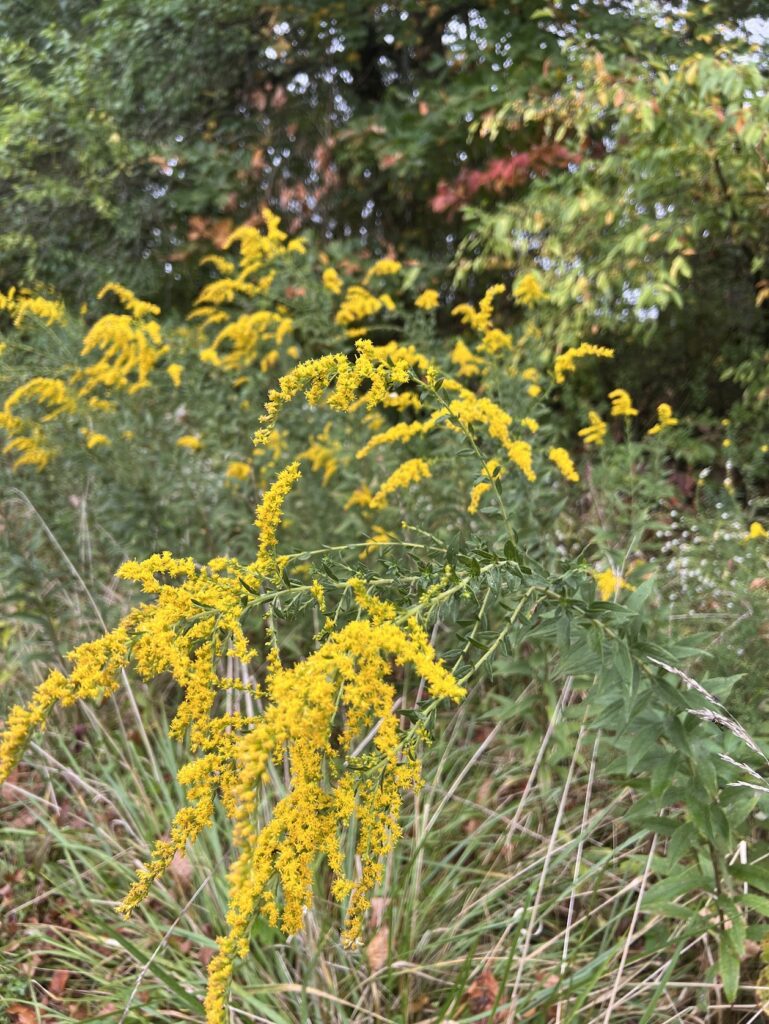
2. Goldenrod (Solidago spp.)
Goldenrod is anything but a weed, it’s a burst of golden sunshine in the fall garden and a true magnet for pollinators. With so many species and cultivars to choose from, there’s a goldenrod to brighten up even the smallest or shadiest spot. Beyond its good looks, goldenrod supports hundreds of native insects and brings warmth to the garden just when we need it most.
| Flower Color Gold, yellow | Light Full Sun to Shade | Bloom Time Summer to Fall |
| Soil Moisture Average to Dry | Height 3-6ft tall |
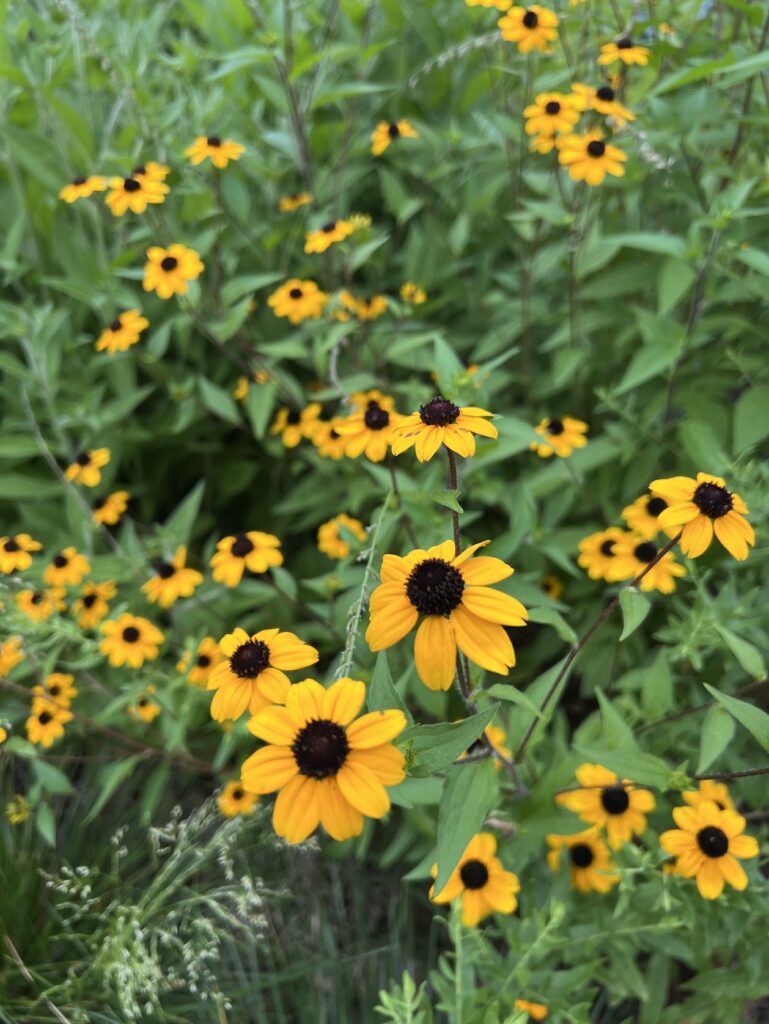
3. Black-Eyed Susan (Rudbeckia spp.)
Rudbeckia’s sunny yellow faces brighten up the garden all summer long and often keep the show going well into fall—especially if you snip off the spent blooms. With so many different types to choose from, there’s a perfect variety for every garden bed or patio pot. Butterflies can’t resist the flowers, and once the petals are gone, the seed heads turn into a tasty winter snack bar for the birds.
| Flower Color Gold, yellow | Light Full Sun to Part Sun | Bloom Time Summer to Fall |
| Soil Moisture Moist to Dry | Height 2-10ft tall |
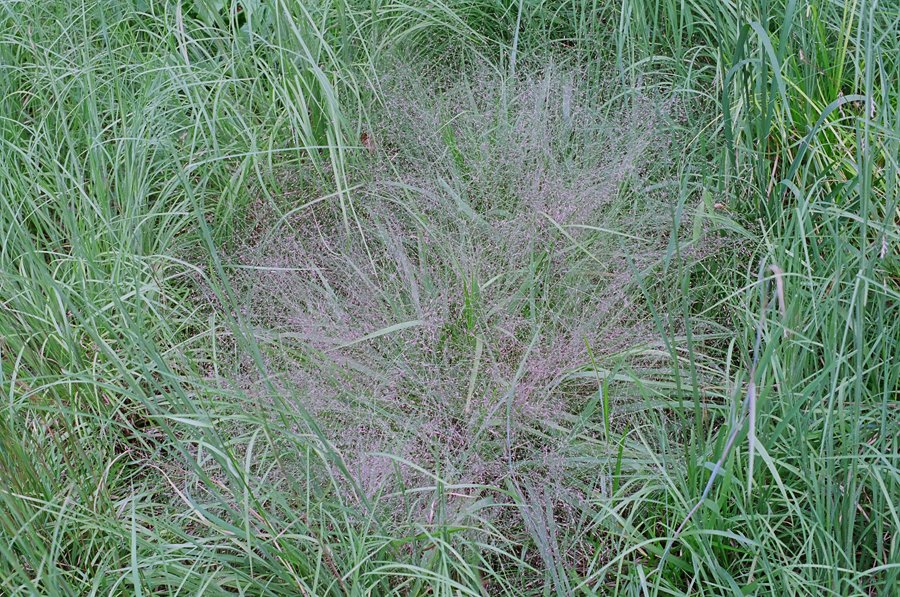
4. Purple Love Grass (Eragrostis spectabilis)
Purple Love Grass is like a little garden magic—this native warm-season grass adds soft texture and a wash of purple color just when the summer garden needs a boost. Its airy, cloud-like seed heads shimmer in the sunlight, creating a dreamy haze that turns borders, meadows, or even a tough little corner into something special. Easygoing and drought-tolerant, it doesn’t ask for much, yet it gives back with beauty and support for wildlife.
| Flower Color Purple | Light Full Sun | Bloom Time Late Summer to Fall |
| Soil Moisture Average to Dry | Height 2ft tall |
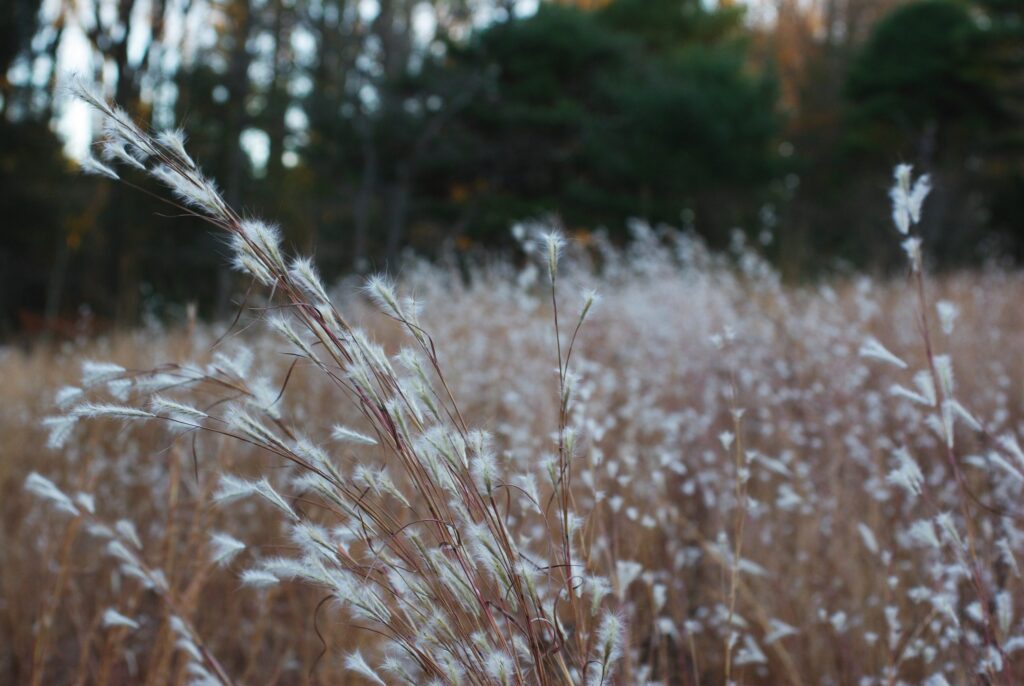
5. Little Bluestem (Schizarchyrium scoparius)
Little bluestem is a cheerful, warm-season grass native to eastern North America, forming graceful blue-green clumps that sway in the breeze. In summer it shows a soft bluish cast, then transforms to glowing copper and bronze in fall, with purplish seed heads adding extra charm. Tough and low-maintenance, it thrives in full sun, tolerates poor soil, heat, drought, and even salt. A favorite for pollinator gardens, it provides year-round cover for wildlife and works beautifully in borders, meadows, containers, or low-water landscapes.
| Flower Color Green in Summer – Coppery in Fall | Light Full Sun | Bloom Time Summer to Fall |
| Soil Moisture Moist to Dry | Height 2-4ft tall |
Plant Once, Enjoy for Years
Skip the seasonal mums and go native! These hardy plants:
- Return year after year, bringing lasting beauty
- Feed pollinators right when they need a boost
- Thrive with less water and fertilizer
By swapping mums for natives, you’re not just making your garden beautiful—you’re making it a vital part of your local ecosystem.